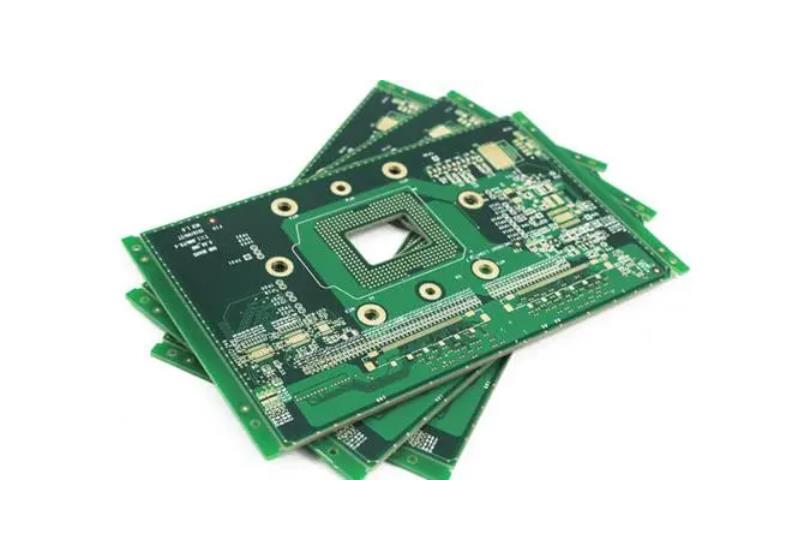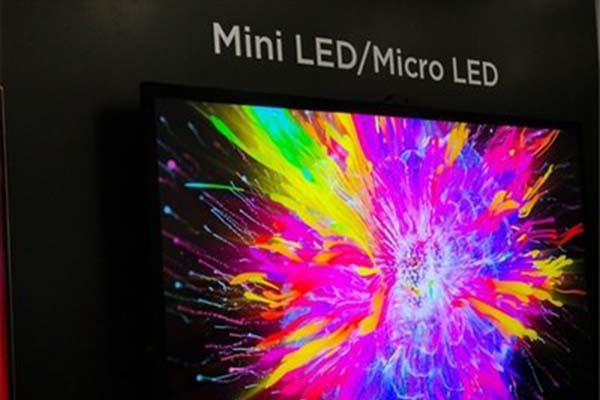In today’s interconnected world, Ethernet networks play a crucial role in facilitating seamless data communication. As industries increasingly rely on robust and efficient connectivity solutions, the choice of connectors becomes paramount. One such connector type gaining popularity is the M12 connector, renowned for its reliability in demanding environments. In this blog post,We’ll explore the intricacies of M12 connectors, shed light on the D-coding standard, and provide insights into the compatibility of D-coding with M12 Ethernet connectors.
Definition and Characteristics of M12 Connectors
M12 connectors, also known as Micro Circular Connectors, are widely used in industrial and automation settings. They feature a circular design with a diameter of 12 millimeters and are renowned for their compactness, robustness, and resistance to environmental factors such as vibration, moisture, and dust. These attributes make M12 connectors ideal for applications in manufacturing plants, transportation systems, and outdoor installations.
Common Applications of M12 Connectors in Ethernet Networks
M12 connectors have found extensive use in Ethernet networks, especially in industrial automation, robotics, and machinery. They provide a reliable interface for Ethernet connectivity, enabling high-speed data transmission and ensuring stable connections even in challenging environments. M12 connectors are commonly utilized for connecting sensors, actuators, controllers, and other devices within industrial Ethernet networks.
Key Features and Advantages of M12 Connectors in Ethernet Networks
M12 connectors offer several advantages in Ethernet networks, including:
Robustness: The rugged design of M12 connectors ensures durability and longevity in harsh operating conditions.
Secure connections: The threaded locking mechanism of M12 connectors prevents accidental disconnections, guaranteeing uninterrupted data transmission.
Versatility: M12 connectors support various communication protocols, including Ethernet, PROFINET, and EtherCAT, making them adaptable to different network requirements.
Compact size: M12 connectors’ small form factor allows for space-efficient installations, particularly in tight or crowded areas.
Introduction to D-Coding
Explanation of the D-Coding Standard for Connectors
In the context of connectors, coding standards define specific mechanical keying or pin arrangements to prevent mismating between connectors of different types. D-coding, one of the coding standards, is widely used in M12 connectors to ensure proper connectivity. It provides a unique keying system, distinguishing M12 connectors from other types and preventing incompatible connections.
Importance of D-Coding in Preventing Mismating and Ensuring Proper Connectivity
Mismating, the improper connection between connectors, can lead to signal loss, unreliable data transmission, and potential damage to connected devices. D-coding plays a vital role in preventing mismating, as it ensures that only connectors with matching coding types can be connected. This safeguard eliminates the risk of accidental or incompatible connections, enhancing the reliability and performance of Ethernet networks.
Overview of Different Coding Types (A, B, C, and D) and Their Specific Applications
Apart from D-coding, M12 connectors also support other coding types, including A, B, and C. Each coding type has a unique keying configuration, enabling connectors to be used in specific applications. For instance:
A-coding: Primarily used for sensors, actuators, and other low-power devices.
B-coding: Commonly found in industrial Ethernet applications, supporting higher data rates.
C-coding: Designed for use with AC power applications.
D-coding: Suitable for Ethernet connectivity, providing compatibility with M12 Ethernet connectors.
M12 Ethernet Connector Coding
Overview of Coding Types Available for M12 Connectors
M12 connectors offer a range of coding options to meet various connectivity needs. While D-coding is specifically designed for Ethernet applications, it’s important to note that M12 connectors can also be found with other coding types, such as A, B, and C. However, when it comes to Ethernet connectivity, D-coded M12 connectors are the preferred choice.
Discussion of M12 X-Coding and Its Relevance to Ethernet Applications
In addition to D-coding, there is another coding type known as X-coding. X-coded M12 connectors are specifically designed for high-speed Ethernet applications, such as 10 Gigabit Ethernet. The X-coding standard provides a higher pin density, allowing for increased data transmission rates. However, it’s important to differentiate between D-coding and X-coding, as they serve different purposes within Ethernet networks.
Examining the Compatibility of D-Coding with M12 Ethernet Connectors
When considering the compatibility of D-coding with M12 Ethernet connectors, it’s essential to ensure that both the connector and the cable are D-coded. The D-coding standard ensures proper alignment and mating of the connectors, guaranteeing reliable Ethernet connectivity. Therefore, for Ethernet applications, it is crucial to select M12 connectors that are specifically labeled as D-coded to ensure compatibility with Ethernet protocols.
Advantages and Disadvantages of D-Coding in M12 Ethernet
Benefits of Using D-Coded M12 Ethernet Connectors
The utilization of D-coded M12 Ethernet connectors offers several advantages, including:
Reliable connectivity: D-coding ensures proper alignment and mating, reducing the risk of signal loss or intermittent connections.
Standardization: The D-coding standard provides consistency across different manufacturers, ensuring interoperability and ease of integration.
Compatibility: D-coded M12 connectors are designed specifically for Ethernet applications, offering seamless connectivity and high data transmission rates.
Error prevention: D-coding helps prevent accidental connections with non-Ethernet devices, minimizing potential errors and enhancing network reliability.
Potential Limitations or Challenges Associated with D-Coding
While D-coded M12 Ethernet connectors provide numerous benefits, it’s important to consider potential limitations or challenges, such as:
Limited to Ethernet applications: D-coded connectors may not be suitable for non-Ethernet applications, requiring different coding standards.
Compatibility with existing infrastructure: When integrating D-coded connectors into an existing network, compatibility with pre-existing connectors and cables must be verified.
Considerations for Selecting the Appropriate Coding Type
When selecting the appropriate coding type for M12 Ethernet connectors, several factors should be considered:
Network requirements: Assess the specific needs of the Ethernet network, including data transmission rates, application types, and environmental conditions.
Compatibility: Ensure compatibility with existing infrastructure, including cables, connectors, and devices.
Future scalability: Consider potential future upgrades or expansions to the network and select coding types that support those requirements.
Use Cases and Industry Standards
Examples of Industries or Applications Where D-Coded M12 Ethernet Connectors Are Commonly Used
D-coded M12 Ethernet connectors find wide usage across various industries, including:
Industrial automation: Connecting sensors, actuators, and controllers in automated production lines.
Transportation systems: Providing reliable Ethernet connectivity in railway and automotive applications.
Energy and utilities: Facilitating data communication in smart grid systems and renewable energy installations.
Mention of Relevant Industry Standards or Guidelines Related to M12 Ethernet Coding
Several industry standards and guidelines govern the use of M12 connectors, including those related to coding. For example, the IEC 61076-2-101 standard provides specifications for M12 connectors, including coding types and requirements.
FAQs:
Q1. What does it mean for an M12 Ethernet connector to be D-coded?
A1. D-coding refers to a specific mechanical keying configuration used in M12 connectors for Ethernet applications. It ensures that connectors with the same coding type can be properly mated, preventing mismating and ensuring reliable connectivity.
Q2. Are all M12 Ethernet connectors D-coded?
A2. No, not all M12 connectors are D-coded. M12 connectors can have different coding types, such as A, B, C, and D. However, for Ethernet applications, D-coded M12 connectors are the preferred choice due to their compatibility and specific design for Ethernet connectivity.
Q3. Can I use non-D-coded M12 connectors for Ethernet applications?
A3. It is not recommended to use non-D-coded M12 connectors for Ethernet applications. Non-D-coded connectors may not provide the necessary compatibility and reliable connectivity required for Ethernet networks. It’s important to select M12 connectors specifically labeled as D-coded for Ethernet applications.
Q4. What is the difference between D-coding and X-coding in M12 connectors?
A4. D-coding and X-coding are different coding standards for M12 connectors. D-coding is specifically designed for Ethernet applications and provides compatibility with M12 Ethernet connectors. X-coding, on the other hand, is designed for high-speed Ethernet applications, such as 10 Gigabit Ethernet, and offers a higher pin density to support increased data transmission rates.
Q5. Can D-coded M12 Ethernet connectors be used with other coding types?
A5. D-coded M12 connectors should only be used with connectors of the same coding type. Mixing different coding types can lead to mismating and unreliable connections. Therefore, it’s important to ensure that both the connector and the cable are D-coded for proper compatibility and connectivity.
Q6. Are there any industry standards or guidelines related to M12 Ethernet coding?
A6. Yes, the IEC 61076-2-101 standard provides specifications and guidelines for M12 connectors, including coding types and requirements. Adhering to this standard ensures compatibility and interoperability in different applications.
Q7. Can I use M12 Ethernet connectors in outdoor or harsh environments?
A7. Yes, M12 connectors are designed to withstand harsh environments. They offer ruggedness, resistance to vibration, moisture, and dust, making them suitable for outdoor and industrial settings. However, it’s essential to ensure proper sealing and protection of the connectors to maintain their reliability in challenging conditions.
Q8. Can I use M12 Ethernet connectors for high-speed data transmission?
A8. Yes, M12 Ethernet connectors, including D-coded ones, are capable of supporting high-speed data transmission in Ethernet networks. However, it’s important to consider the specific requirements of the application and select connectors and cables that meet the desired data transmission rates.
Conclusion
M12 Ethernet connectors can indeed be D-coded, ensuring proper alignment and mating for reliable Ethernet connectivity.
D-coded M12 connectors offer numerous advantages in Ethernet networks, including reliable connectivity, standardization, compatibility, and error prevention. By adhering to the D-coding standard, these connectors enable seamless integration into Ethernet applications, providing high-speed data transmission and robust connections.
However, it’s important to consider specific network requirements and compatibility when selecting the appropriate coding type for M12 Ethernet connectors. Factors such as data transmission rates, application types, and existing infrastructure should be taken into account to ensure optimal performance and future scalability.


